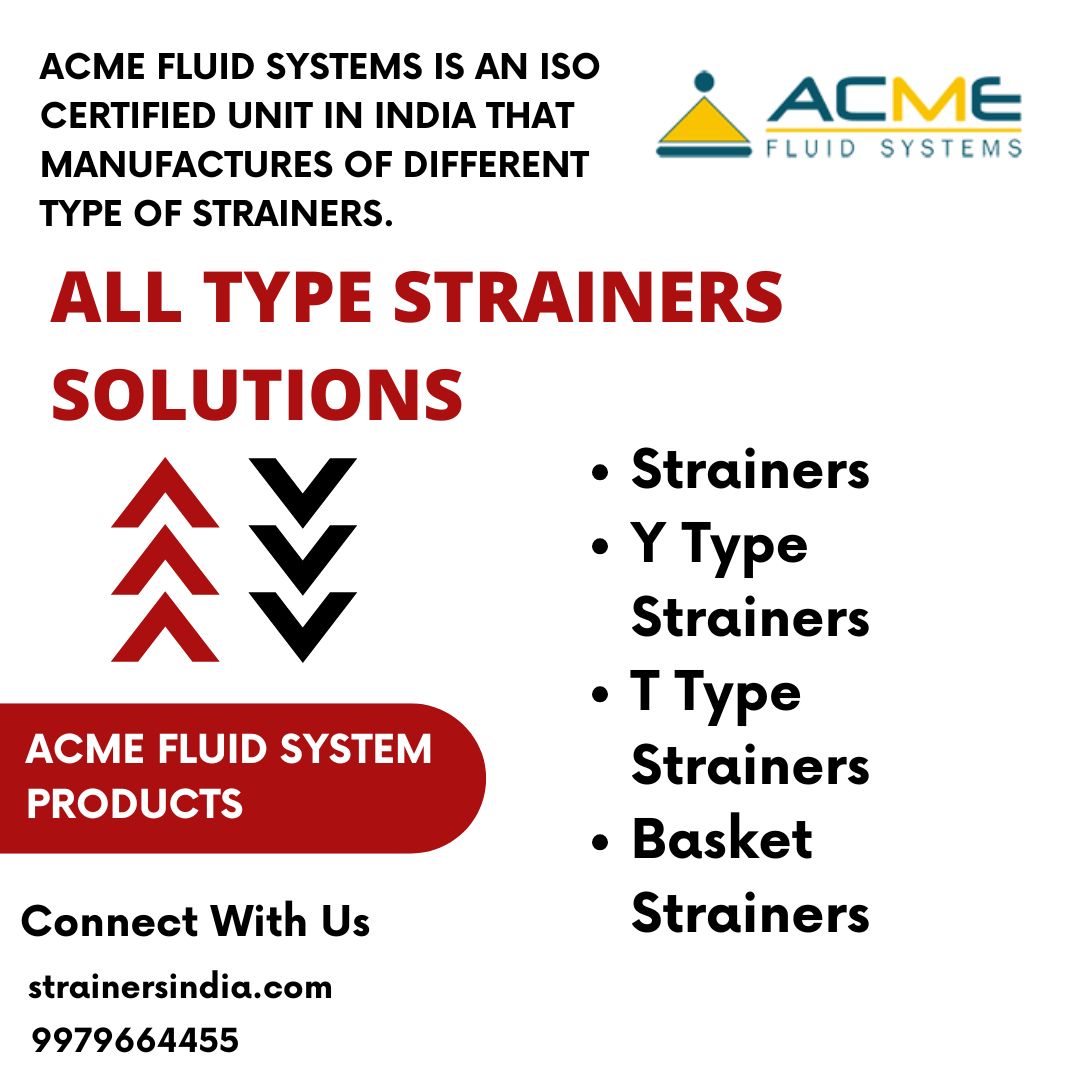Let’s be honest—when we think about industrial equipment, strainers probably aren’t the first thing that pop into our minds. But without them, entire systems could grind to a halt. Strainers are the unsung heroes of industrial filtration, quietly working in the background to keep things flowing smoothly.
What Are Strainers?
Strainers are mechanical devices used to remove unwanted solids from liquid or gas pipelines. They protect pumps, valves, and other equipment from damage caused by debris. Think of them as the gatekeepers—keeping the bad stuff out and letting the good stuff flow.
Why Strainers Matter in Industrial Settings
From oil rigs to water treatment plants, strainers are everywhere. They ensure systems run efficiently, prevent expensive breakdowns, and maintain product integrity. In short, if there’s fluid flowing, a strainer’s probably there, working overtime.
Types of Industrial Strainers
Y-Strainers
Y type strainers are compact, versatile, and usually installed in pipelines to remove small amounts of solid particles.
Ideal Applications
Perfect for steam, gas, and liquid applications with minimal solid content. Think HVAC systems and fuel lines.
T-Strainers
T Type Strainers resemble a “T” in design and are generally custom-made for specific applications.
When to Use
Great for tight spaces and specialized requirements where standard strainers don’t quite fit the bill.
Basket Strainers
Basket strainers have a larger surface area and can handle higher volumes of debris.
Heavy-Duty Applications
Ideal for processes involving viscous fluids or high debris loads like chemical and food processing.
Duplex Strainers
Duplex Strainers are made with two strainer baskets and a valve for switching between them, allowing for continuous flow during cleaning.
Continuous Flow Benefits
Absolutely essential in operations where you can’t afford downtime, such as pharmaceuticals or power plants.
Temporary and Cone Strainers
Used during system startup or testing phases to catch construction debris and contaminants.
Startup or Short-Term Uses
Once the system is running clean, these can often be removed or replaced with permanent options.
Key Applications of Industrial Strainers
Oil and Gas Industry
Oil rigs and refineries depend on strainers to remove sand, rust, and other particulates that could ruin expensive pumps and meters.
Water Treatment Facilities
Strainers here help remove debris from water before it enters filters and membranes, prolonging their life and efficiency.
Chemical Processing
In chemical plants, strainers keep pipelines and reactors clean and safe by trapping harmful particulates.
Food and Beverage Production
Ever bite into something crunchy that shouldn’t be? Strainers help ensure that doesn’t happen by removing solids from liquids like juice, milk, or syrup.
Pharmaceutical Manufacturing
Sterility is everything here. Strainers are used in early filtration stages to maintain cleanliness and comply with strict regulations.
Power Plants and Boilers
Steam needs to be clean to protect turbines and boilers. Strainers remove rust and sediment from feedwater lines.
HVAC Systems
Air and fluid systems in buildings and factories rely on strainers to keep everything flowing efficiently and safely.
Benefits of Using Strainers in Industrial Processes
Equipment Protection
Debris can destroy pumps, valves, and seals. Strainers act like bodyguards for your equipment.
Improved Product Quality
Nobody wants contaminants in their end product. Clean flow equals a clean result.
Enhanced Efficiency and Flow
A clogged line slows everything down. Strainers ensure you’re getting the flow rate you need without hiccups.
Cost Savings and Reduced Downtime
Less breakdowns = less repair costs and more uptime. It’s that simple.
Material Choices and Their Impact
Stainless Steel
Durable, corrosion-resistant, and ideal for most industrial uses.
Bronze, Cast Iron, and PVC
Each has its place. Bronze for marine environments, cast iron for low-pressure systems, and PVC for chemical compatibility.
Corrosion Resistance and Compatibility
Choosing the wrong material can lead to corrosion and contamination. Always match the strainer to your media.
How to Select the Right Strainer
Flow Rate Considerations
Too much resistance can choke your system. Pick a strainer that keeps things flowing at the needed rate.
Pressure Drop Analysis
Every strainer adds some resistance. Understanding pressure drop helps you plan for performance.
Mesh Size and Filtration Level
Mesh size determines what gets caught. Smaller mesh = finer filtration, but also higher pressure drop.
Maintenance Requirements
Some strainers are easy to clean; others need system shutdowns. Know what you’re getting into.
Common Mistakes in Using Strainers
Ignoring Maintenance Schedules
Even the best strainer fails if it’s never cleaned. Build maintenance into your routine.
Installing the Wrong Type
Not all strainers are created equal. Use a basket where a Y-strainer should go, and you might clog faster than you think.
Undersized or Oversized Strainers
Too small and it clogs. Too big and you’re wasting space and money. Get the sizing just right.
Conclusion
Strainers might not be flashy, but they’re absolutely vital. Whether you’re dealing with high-pressure steam or delicate food production, they keep everything running clean, safe, and efficient. Choosing the right type, material, and maintenance schedule can make all the difference in your industrial setup.
FAQs
1. What is the difference between a strainer and a filter?
Strainers remove larger particles using a mesh or perforated screen, while filters are designed for finer filtration, often using media like paper or membranes.
2. How often should industrial strainers be cleaned?
It depends on the application and debris load, but a regular inspection every few weeks is a good starting point.
3. Can strainers be reused?
Yes, most industrial strainers are designed to be cleaned and reused, especially basket and duplex types.
4. Are strainers suitable for high-pressure systems?
Absolutely, but you need to select a model rated for the pressure and temperature of your system.
5. What industries benefit most from strainers?
Oil and gas, water treatment, chemical processing, food and beverage, pharmaceuticals, and HVAC systems—all rely heavily on strainers for safe and efficient operation.



